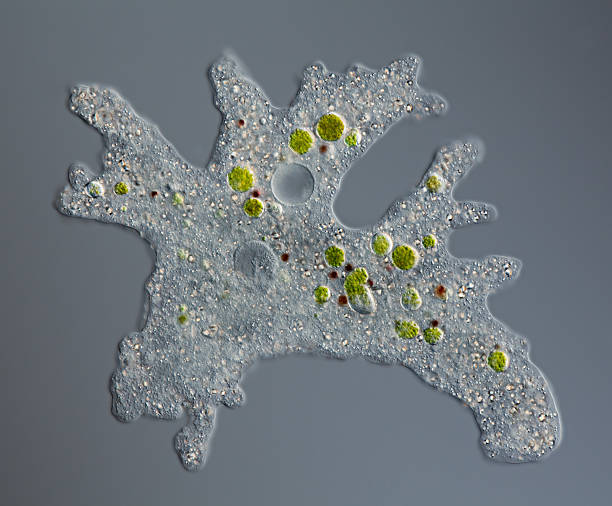
Amoeba Signs
Amoebas are single-celled organisms found in various environments, including soil and water. While many amoebas are harmless, certain types can cause serious infections in humans.
Understanding the amoeba signs and symptoms is crucial for early diagnosis and treatment. In this blog, we will explore the latest updates on amoebic infections, focusing on their signs and symptoms in 2024.
What Are Amoebas?
Amoebas belong to a group of protozoa and can exist in both fresh and saltwater. They thrive in warm, stagnant environments and can be free-living or parasitic. Notably, Entamoeba histolytica is the most well-known pathogenic amoeba, responsible for diseases like amoebic dysentery.

Common Amoeba Signs and Symptoms
When it comes to amoeba signs and symptoms, it is essential to recognize that symptoms may vary depending on the type of amoeba involved. Here are the most common symptoms associated with amoebic infections:
1. Gastrointestinal Issues
Gastrointestinal disturbances frequently serve as the first signs of amoeba infection. Individuals may experience:
- Diarrhea: This may be severe and can include blood or mucus.
- Abdominal Pain: Cramping and discomfort often accompany the diarrhea.
- Nausea and Vomiting: These symptoms may further complicate the condition.
2. Fever and Fatigue
Amoebic infections often trigger a fever, indicating the body’s response to the infection. Fatigue typically follows, making daily activities increasingly challenging.
3. Weight Loss
Unexpected weight loss can occur in individuals suffering from severe gastrointestinal symptoms. This often results from nutrient malabsorption and loss of appetite.
4. Dehydration
Severe diarrhea and vomiting can lead to dehydration. Symptoms to watch for include:
- Dry Mouth and Skin: This indicates fluid loss.
- Dizziness and Lightheadedness: These sensations can signal more serious dehydration.
- Decreased Urine Output: This is another red flag that warrants medical attention.
Severe Complications of Amoebic Infections
In some cases, amoebic infections can lead to severe complications. These complications require immediate medical attention to prevent further health issues.
1. Amoebic Liver Abscess
Amoebic liver abscesses occur when Entamoeba histolytica spreads to the liver. Symptoms include:
- Severe Abdominal Pain: This is typically localized in the upper right quadrant.
- Fever: A persistent fever may indicate infection.
- Jaundice: Yellowing of the skin and eyes can also occur.
2. Extraintestinal Infections
Amoebas can spread to other organs, including the lungs and brain, leading to serious complications. Symptoms may vary based on the affected area. For instance, pulmonary involvement may cause cough and chest pain, while neurological symptoms might include confusion and seizures.
Diagnosis of Amoebic Infections
Early diagnosis of amoeba signs and symptoms is crucial for effective treatment. Healthcare providers use several methods to identify amoebic infections:
- Stool Tests: Microscopic examination of stool samples often reveals the presence of amoebas.
- Blood Tests: These can indicate the body’s response to infection.
- Imaging Studies: Ultrasounds or CT scans may be necessary to assess complications, such as liver abscesses.
Treatment Options for Amoebic Infections
The treatment for amoebic infections typically involves antiparasitic medications. Commonly prescribed medications include metronidazole and tinidazole. It is crucial for individuals to complete their treatment to ensure the complete eradication of the infection.
Supportive Care
In addition to medication, supportive care is vital for recovery. This includes:
- Hydration: Oral rehydration solutions can help replenish lost fluids.
- Nutritional Support: Maintaining a balanced diet supports overall recovery.
Preventing Amoebic Infections
Preventing amoebic infections is essential, especially in areas where they are common. Here are some effective preventive measures:
1. Safe Drinking Water
Access to clean drinking water is crucial. Boiling water or using purification methods can significantly reduce the risk of amoebic infections.
2. Good Sanitation Practices
Good hygiene practices, such as regular handwashing and proper waste disposal, can help minimize exposure to harmful amoebas.
3. Food Safety
Cooking food thoroughly is essential to prevent amoebic infections. Avoiding raw or undercooked foods in areas known for amoeba prevalence is a wise choice.
Conclusion
Recognizing amoeba signs and symptoms is vital for timely diagnosis and treatment. In 2024, staying informed about these infections and their risks is more important than ever. While many amoebas are harmless, some can lead to severe health complications if left untreated.
By being aware of common symptoms and seeking prompt medical attention, individuals can significantly reduce their risk of infection. Practicing good hygiene and ensuring safe drinking water are essential preventive measures. Education and awareness remain crucial in the fight against amoebic infections.
Overall, understanding amoeba infections can help protect your health. Make sure to stay informed and prioritize your well-being to minimize the impact of amoebas in your life.
Read: Approved Antiaging Tips





